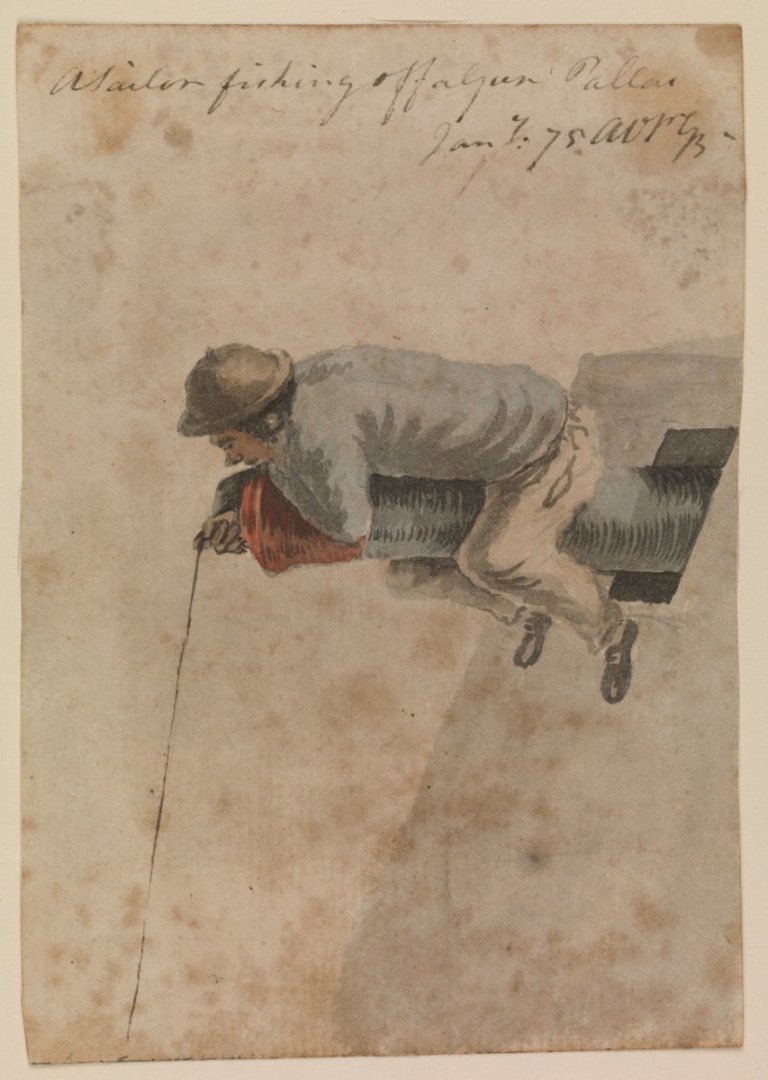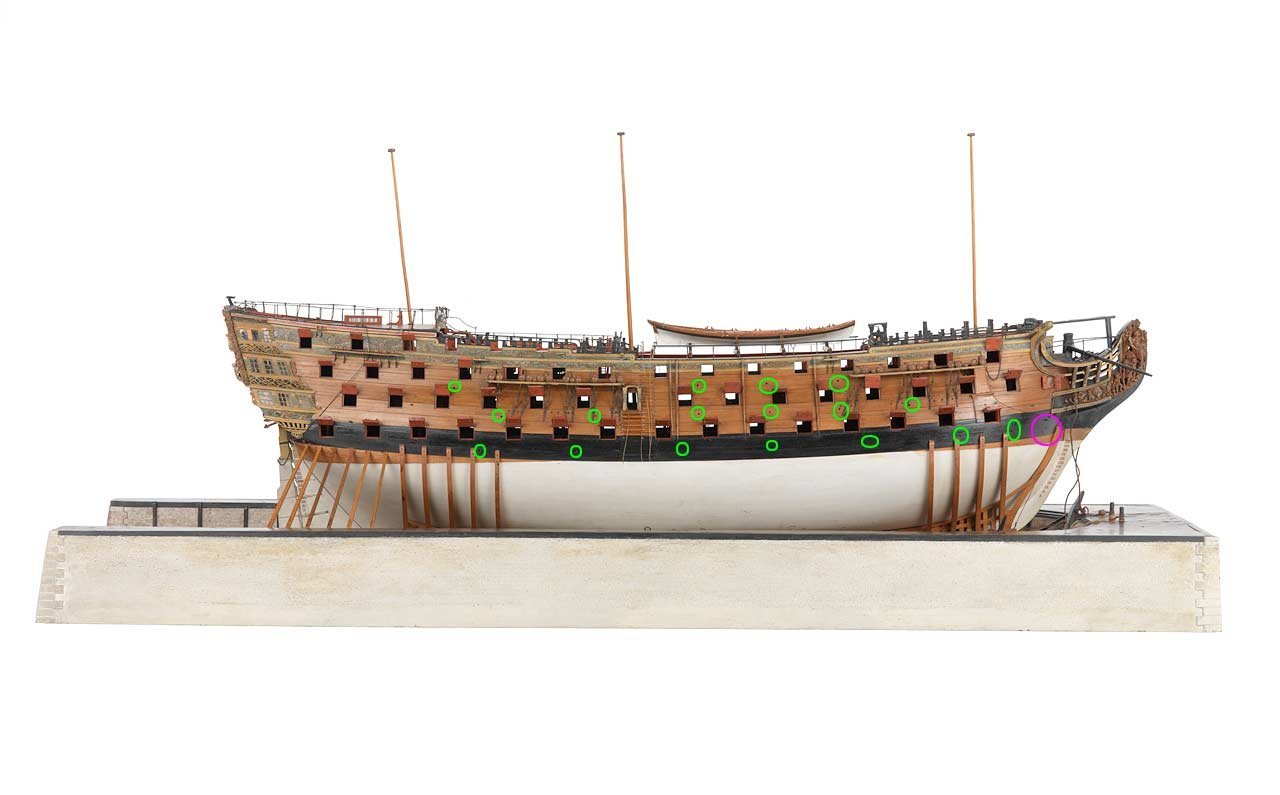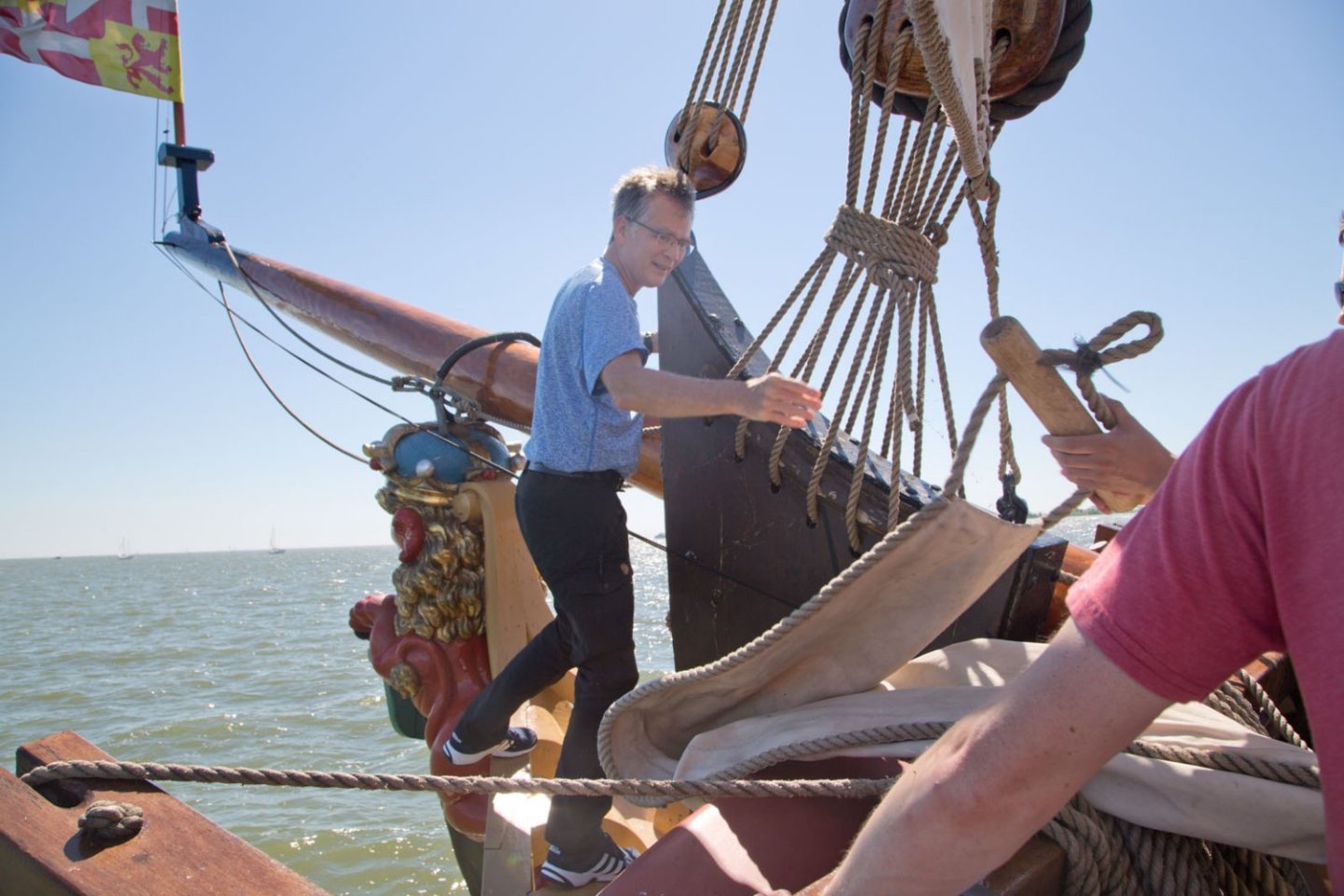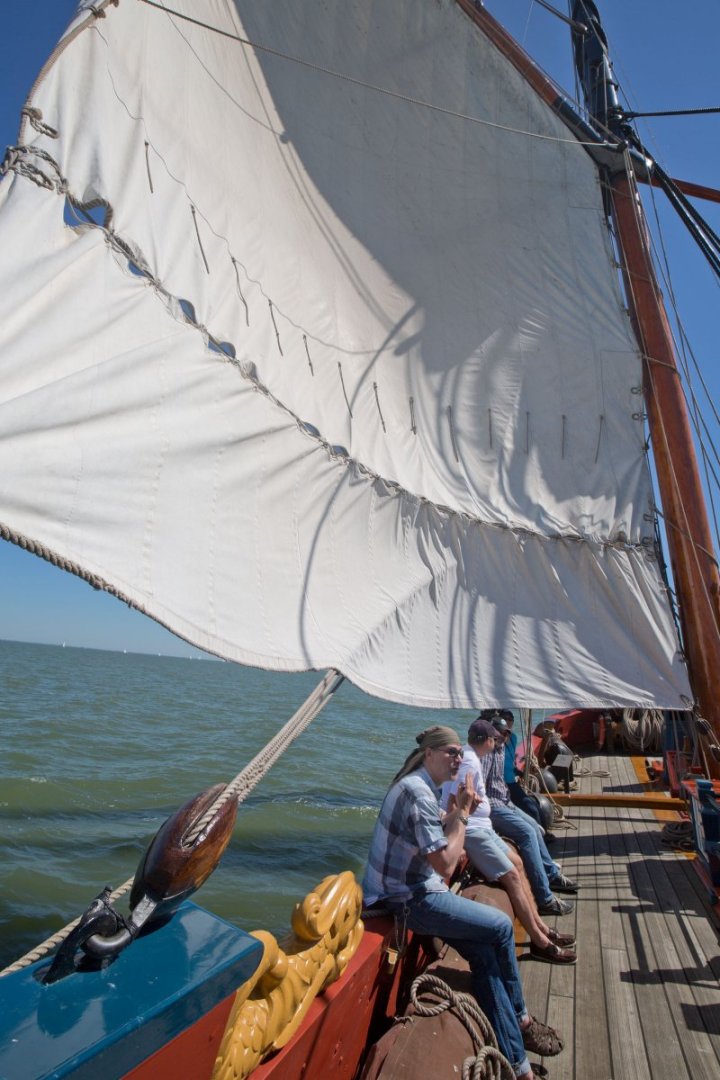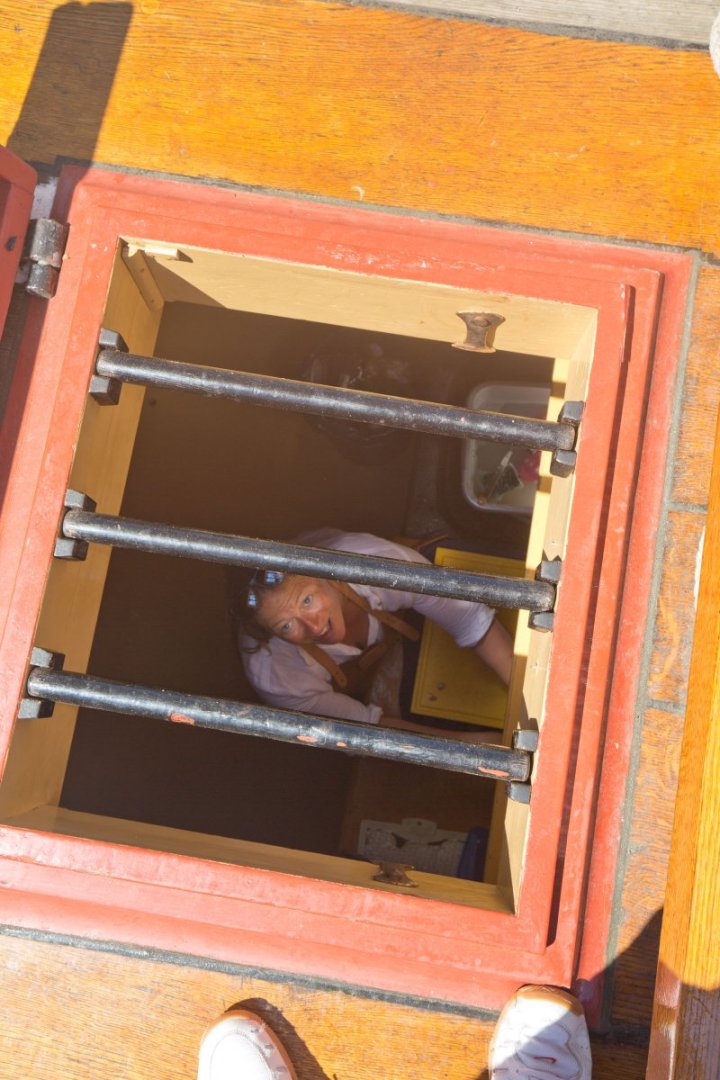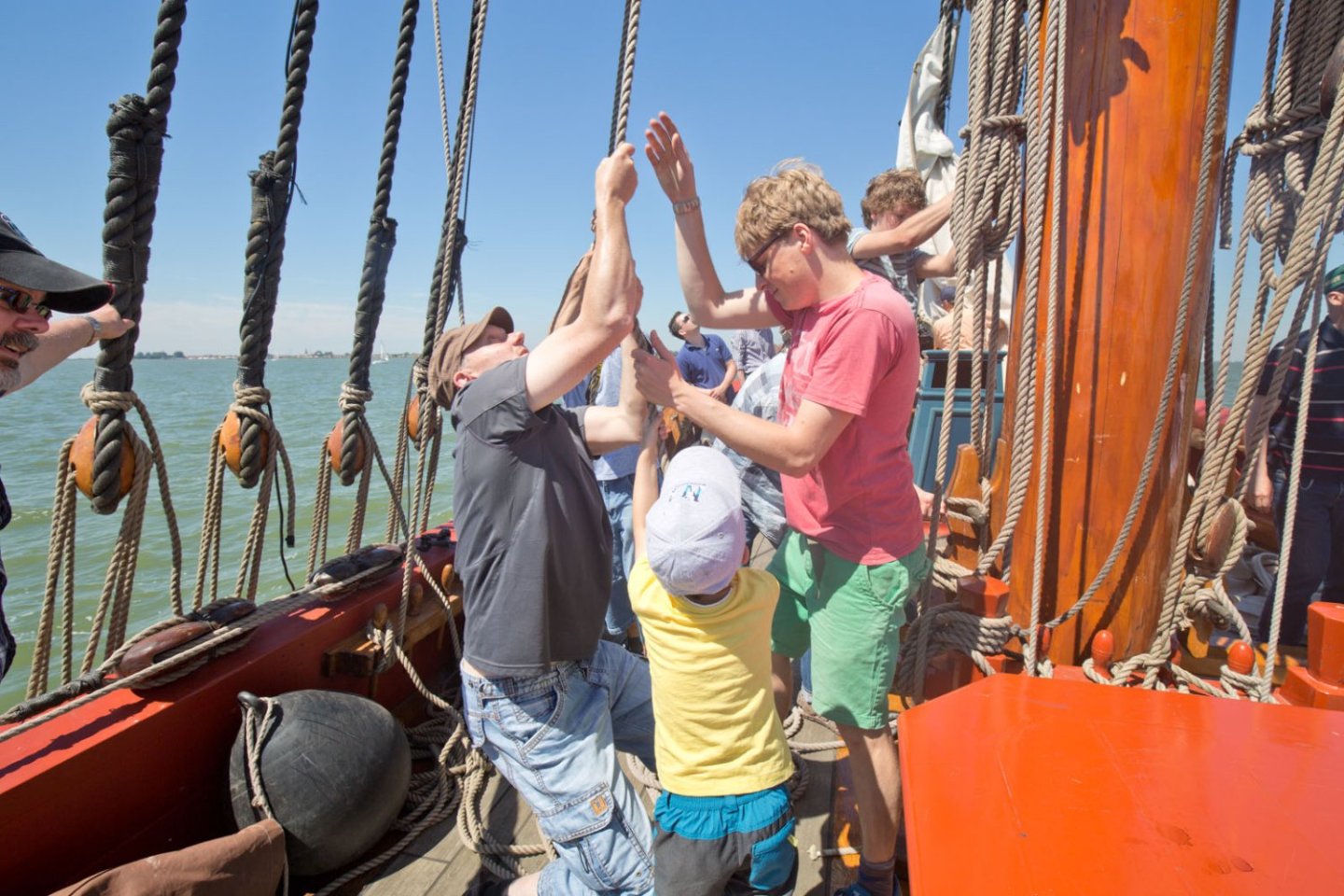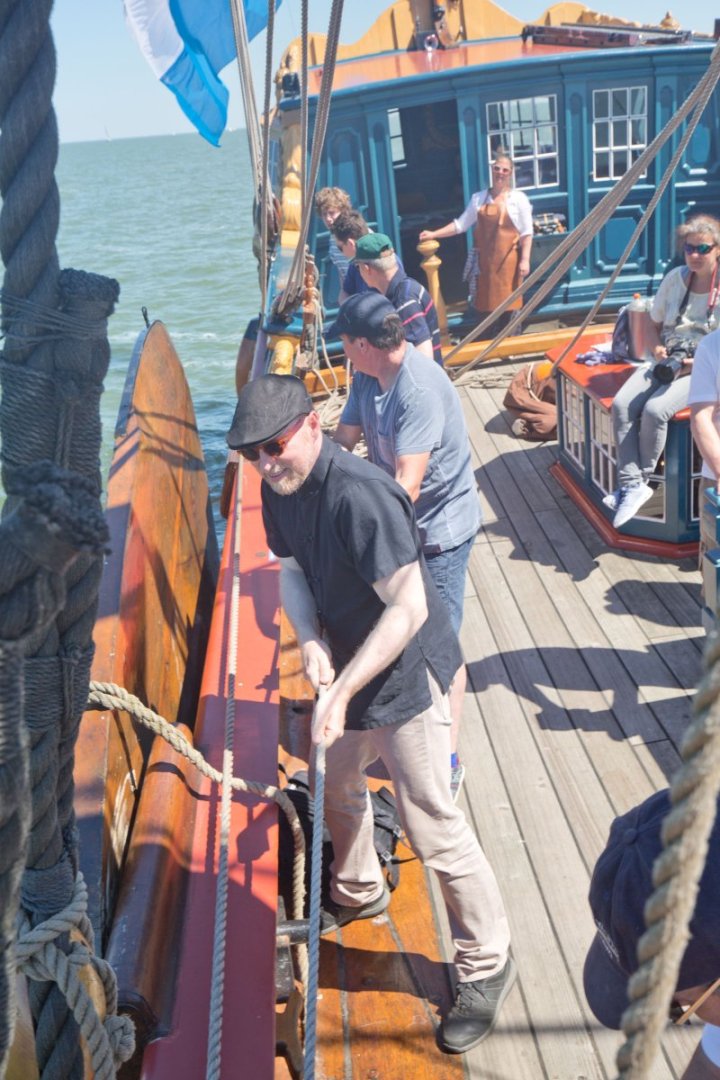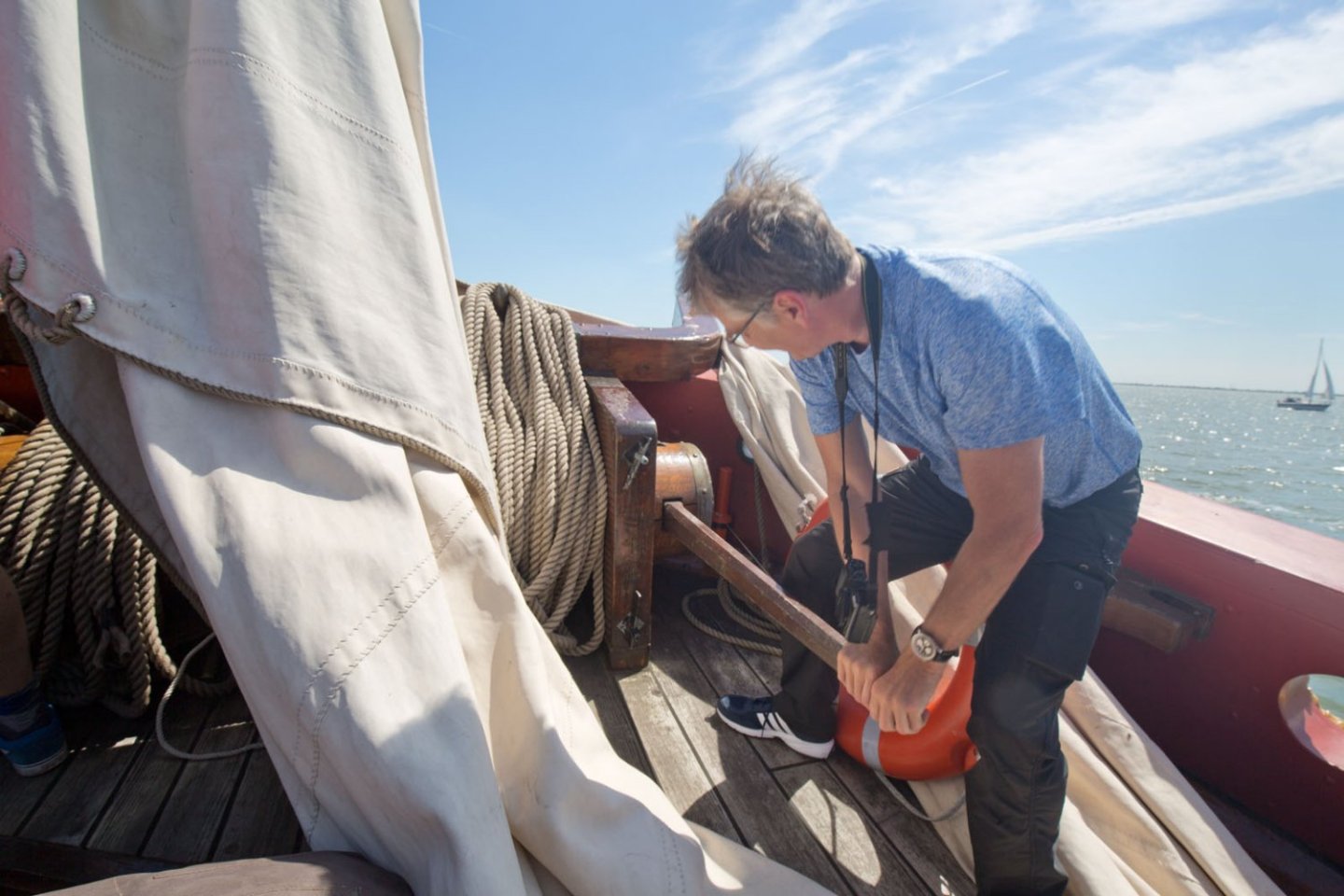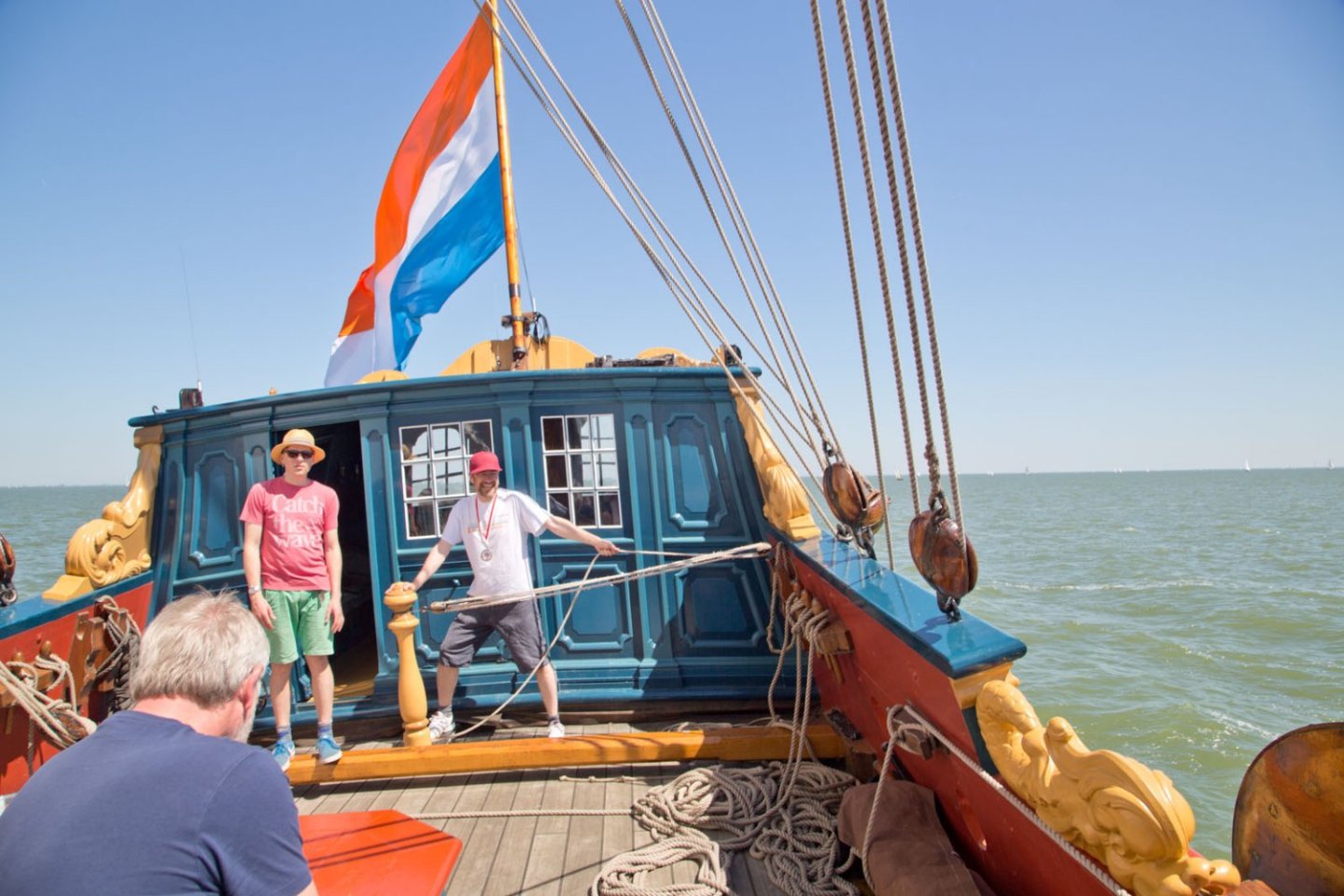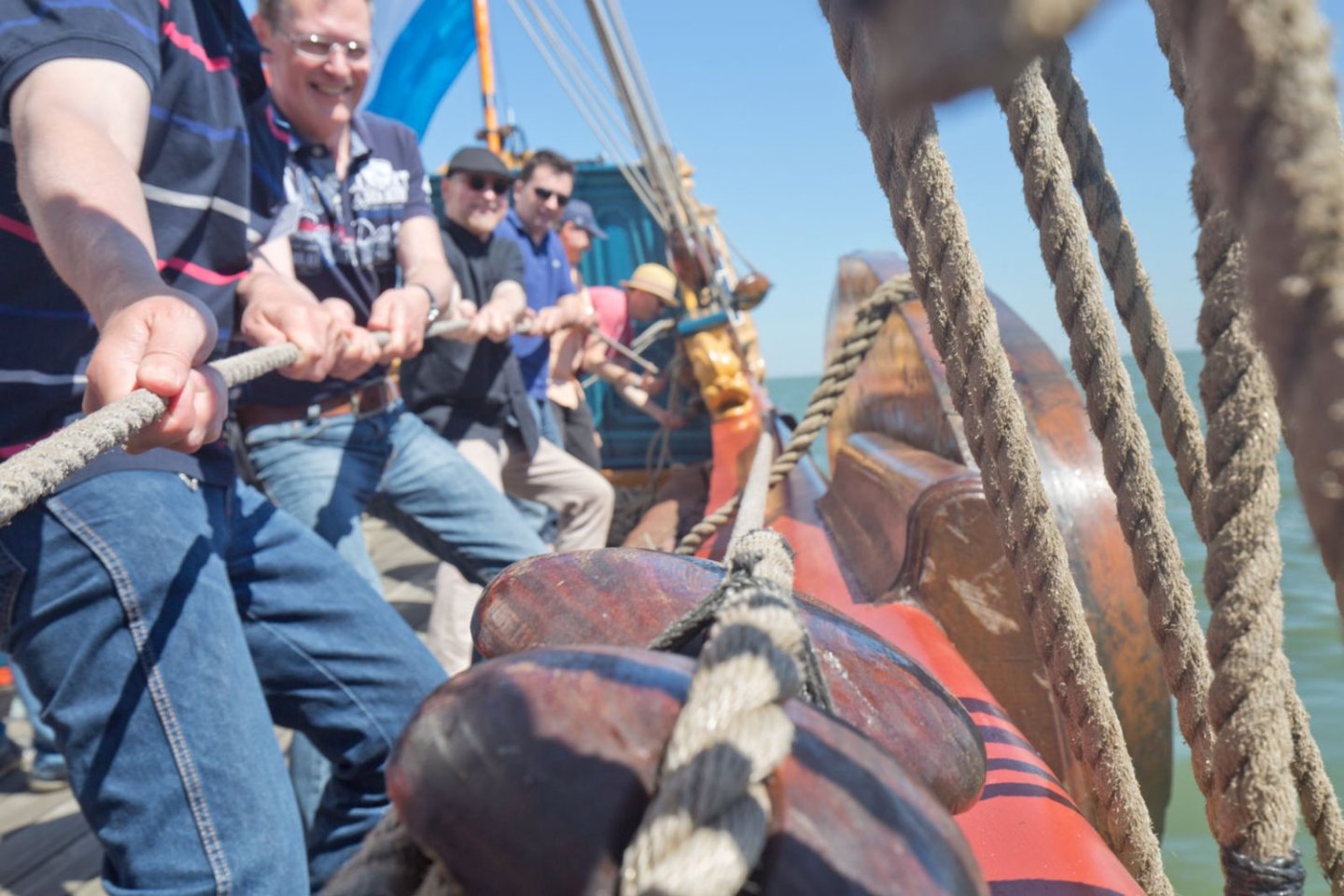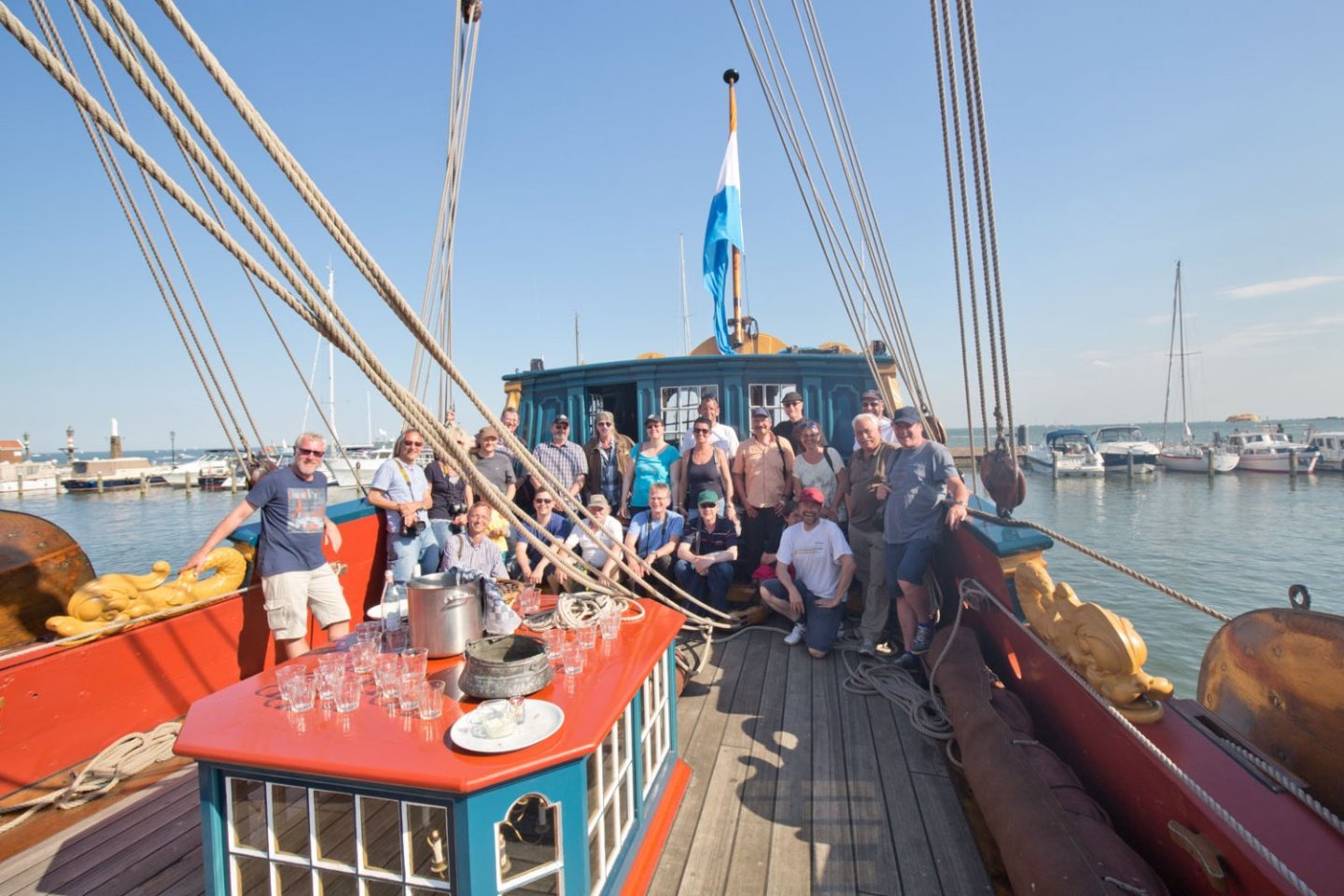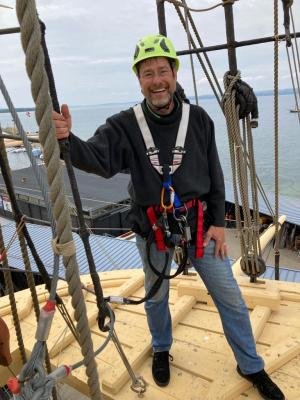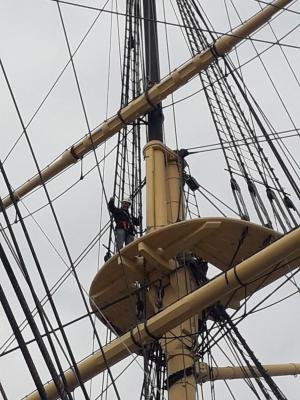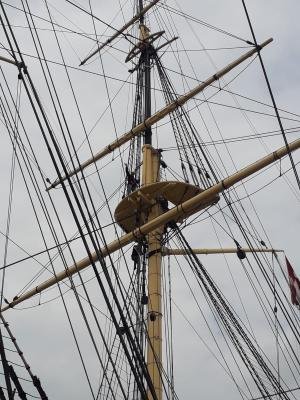-
Posts
2,426 -
Joined
-
Last visited
Content Type
Profiles
Forums
Gallery
Events
Everything posted by dafi
-
Several of Brays sketches show the red head too. So I believe it was contemporary. Colors to be found were mostely white or red. We had a discussion on or german forum and found no hard evidence so far of if it was only for the looks or served a reason. Best guess so far is, that it had to do with sealing the tompions. An educated one but still a guess ... XXXDAn
-
Reminds me on a certain ship in Portsmouth ... ... and one in Boston ... ... me heratic .. ... XXXDAn
-
As being a producer myself I would like to add and confirm some of the reasons said before: 1 - Keep it simple enough to give the unexperienced modeler a real chance of success. 2 - Do not tempt them too much. If it is said "for experienced modeler only" I would guess that most starters feel immediately a bit of hubris and will get into a venture that might them lead into failure. 3 - Good modelers know anyway where to "pimp" 🙂 Something I learnt from the De Agostini Victory build: Almost all of the modelers that finished the build were the ones, that followed the basic instructions without too much or no pimping. Almost all that wanted to "improve" the kit failed. And those are unfortunately the ones with the loudest voice in the social media ... XXXDAn
-

Archaeological Evidence for the Development of RN Gunnery
dafi replied to Steve20's topic in Nautical/Naval History
There is one: Gravity 😉 We have been discussing this feature in our german forum too. My strong believe is, that the shot was quite save in its holes as for its own weight. Since they were a very snug fit in the racks, they couldn't build up any momentum that would fling them outside. For this, they would have to have less weight. You can see from a bowling ball, that they are very difficult to move out of their holders when stored. With a toy soccer ball, the situation is quite different, as a breeze is enough because of the lack of gravity. If the cannon shot is almost sunk to its middle inside the rack, both the ship pitching, rolling and standing tilted should not be a problem. At least as long as the ship itself doesn't mind, after that it doesn't matter anyway 😉 XXXDAn -

Entry Port Grates
dafi replied to Dlowder's topic in Building, Framing, Planking and plating a ships hull and deck
Do not see this door as a big point of water entry 🙂 I do not believe that a scupper for the door was needed. There was more water coming in from the waist - waves, rain and cleaning - and it ran along the waterway to the next scupper. As ships were not stable a scupper straight underneath the entry port would not have helped too much as the water would follow the way of gravity, following the angle of the masts and the motion of the waves. So just offer it a multitude of exhausts, one will be on the right place. And next moment this will be another one 😉 Just see the green circles in the picture above. XXXDAn -

Entry Port Grates
dafi replied to Dlowder's topic in Building, Framing, Planking and plating a ships hull and deck
Anyway this is an 20 century addition 🙂 I love the expression "raised wooden welcome mat"! That made my day 🙂 🙂 🙂 - I know of no scuppers for the door, not today or even less in contemporary sources - There is a big scupper passing though the middle of the outside steps on todays Victory, but I always related this to the chain pumps. Stupid place to have it placed imho ... As for Allans question regarding the scuppers: the only contemporary source that I know for placement of scuppers on a first rate is the model LR0512 http://collections.rmg.co.uk/collections/objects/66473.html XXXDAn XXXDAn See more info about the entry door here: -
Here some pictures from the Invincible Wreck Site on Facebook. The only original stay and preventer with their mouses that I know, only 50 years before Big V. Interesting is, that they are completely served only in the area of the mouse, the rest of the mainstay is only wormed, the preventer apparently not ... XXXDAn source: https://www.facebook.com/InvincibleWreckSite
-

How an 18th Century Sailing Battleship Works
dafi replied to Tossedman's topic in Nautical/Naval History
Good one and wonderful! In our german site the question about the "vent trunks" came up too. Those are shown in the Vic today and are also displayed in the AOTS by McKay and this where the name was taken from. That´s why me too I incorporated them in my build, long before going to deeper resaerch and questioning sources like the modern authorities 🙂 My believe is that the principal source of the video is AOTS as other small bits fit in there too. All the best and enjoy the show, DAniel -

Shipwreck of the schooner Ironton found in Lake Huron
dafi replied to DelF's topic in Nautical/Naval History
Enjoy and shiver ... Thanx, Dan -
And now on to new adventures. After I was once again amazed by the print results of the iron swivel gun, I wanted to try out something I had been thinking about for a while. One of the most time-consuming parts of the gun deck is the gun rigging, especially the side tackles. And you don't see much of it. Why not try something new there? A quick test shot ... ... which showed that in principle it fits http://www.shipmodels.info/mws_forum/images/smilies/icon_smile.gif So I made it a bit more precise and quickly installed it. Still a bit much spiral spring, but I think something is possible. As a next step I made the ropes of the rigging a bit thinner, 0.3 mm instead of 0.4 mm diameter. I also broke up the uniformity a bit and added minimal variances. Old on the right, new on the left. Then I swung the brush, added shading to each colour as usual, and added some ink to the whole thing. This was the time for a little setting test. The inner planks were marked with a pencil, the knees were glued on and I noticed that the holes for the bolts were still missing... ... so I got out the shish kebab skewers with the incorporated drills and ... ... drilled all the way through the ship http://www.shipmodels.info/mws_forum/images/smilies/icon_smile.gif Attached the side rigging to the gun and tested the position. Fits, only the breech rope is missing. The length is determined, all fittings are attached and ... ... wrapped the rope around the grape as in the Constitution. Since the breech rope is longer than the rest, this could be glued in place without any finger knotting ... ... and then the gun is pushed towards the ship's side, the guide rails are guided into the glued holes and the gun is placed, a little glue with the toothpick under the wheels and done http://www.shipmodels.info/mws_forum/images/smilies/icon_smile.gif XXXDAn
- 58 replies
-
- Revell
- Constitution
-
(and 1 more)
Tagged with:
-
A short excursus. The printer has once again spit out something, a small collaborative work from www.segelschiffsmodellbau.com A small iron swivel for older ships. Faramir had built the original file of the barrel, with me making a few more adations. Interesting are the dimensions of the trunnions with 0.3 mm and the matching eyebolt of the holder. This actually results in a fully movable gun even in this scale :-) All modern drawings known to me show the powder chamber handle always pointing upwards. After the first test prints I saw a Life-Fire video and realised that the handle was turned to the side and so the fuse hole was on top, otherwise the fuse would not have been able to reach it. So I turned the handle and inserted the fuse hole. And there they were, the new prints. For painting, I put the barrels on a needle and noticed that the difference in diameter is not very big. With a very dry brush I brushed them with black paint, which doesn't put to much volume on and rubbed them carefully with graphite on a Q-tip. I was most surprised that the firing hole is actually visible :-) And because it is so beautiful, different views. There you go, the bad boys may finally come 🙂 XXXDAn
- 58 replies
-
- Revell
- Constitution
-
(and 1 more)
Tagged with:
-
Short interlude, "What if." I wonder what the Constitution would look like with a 12 cylinder sports engine? A contemporaneous anchor nozzle from HMS Royal George at Thorsminde actually still survives. A lead pipe with the ends flanged around. So new hawse inlays printed, with 3 mm inside, 4 outside and the curves at the flang. Hawse holes drilled out to the nea diameter, inlets pushed in ... ... and inside still another fake flange put on. Now the whole area is also neatly wallpapered in one piece, the closed port is no longer visible, and the intersection of the plastic strips is in the middle of the port and will be covered by the gun. XXXDAn
- 58 replies
-
- Revell
- Constitution
-
(and 1 more)
Tagged with:
-
After that, I took care of the anchor hawses. In the kit, these go 90° perpendicular to the ship's axis and out downward. Considering that the ship is driven away from the anchor by the wind on the tensioned anchor cable, there would have been a nice bend in the tensioned cable. That's why the anchor nozzle has to sit parallel to the ship's axis with minimal downward slope. A toilet paper roll happened to be the right height and served as a rest for the Dremel. The anchor cable has about 2 mm in my scale, so printed short semi-finished tubes with 2.2 mm inside and 3 mm outside and glued them in and then still trimmed all after that. Then the cable was threaded ... ... and noticed, omg, there is missing the clearance. Often the anchor cables were still secured with various wrappings against chafing. In addition, I decided that the ship is represented before 1812, and there the bridle port, the foremost port was not cut in yet. This one was not equipped anyway and served to facilitate the anchor handling. So this port was closed and I noticed that this would probably result in a nasty patchwork on the internal planking. So came what had to come, a dafi did what a dafi has to do: Demolition! With these cruel pictures I just want to leave you ... XXXDAn
- 58 replies
-
- Revell
- Constitution
-
(and 1 more)
Tagged with:
-
So far I had ever avoided, and the gun ports not yet clad inside. Was made up, so that one does not see the wooden slats and also file irregularities are concealed. First all 4 sides laminated with 0.25 polysterol ... ... then trimmed the inside with a scalpel ... ... built a small sanding block with a handle ... ... and neatened everything. Fortunately only 30 times and not 100 like the Vic. Saved the scraps, you can still fill up any gaps with them. XXXDAn
- 58 replies
-
- Revell
- Constitution
-
(and 1 more)
Tagged with:
-
But not to forget the basics besides all the fascination of printing. The next step was the stern cabins layout. Since the sources about the position of the cabins are quite "soft", I took another look at the situation. In the galley runs the mast and in front of it the rudder ropes. And food preparation should also be there. According to most sources, there is a cabinet with a worktop there, consequently the front edge has been pushed forward and the space for a small cabinet has been created. Fits just so with the grating, although I do not know to what extent this opening is historically documented. Inside was now the necessary place for food preparation. And doors and guns don't get in each other's way either. The back of the captain's cabin is also nice and cramped. For the bed, I did away with the lattice structure and provided a curved entrance in the French style. The sofa is also now in place. A little side note: I had already mentioned that the lattice structure gets a nice belly when printed, which almost disappears again when cured under UV light. XXXDAn
- 58 replies
-
- Revell
- Constitution
-
(and 1 more)
Tagged with:
-
Thank you Jim! At the weekend was "Dafi home alone". As children are, there was again goofing around to be done. On the agenda was the doll's house in the back. In the kit there is only the bulkheads to the captain's cabin. But contemporary sources still show the bulkheads of the wardroom and the pantry for these two areas. Since the Constitution seems to me like a mixture of French and English influences, I looked at the various templates in the Boudriot as with all the England girls. Also interesting is this Englishbeauty from the NMM, one of the few contemporary models where you can see the internal bulkheads. The adaptation of the vertical structures to the inclined ship's side is very nice, but I ended up going with the classic vertical version. Interesting also the change of the height of the subdivision: at the ship's side at the level of the lower edge of the gunports, otherwise almost in the middle. The first print came out quite usable. The basic layout looks like this, the bulkheads in the captain's cabin are still missing. And here are just a few impressions of what can be done. Focus on the bulkhead to the captain's cabin. And here are a few pictures of the forward bulkhead and pantry. Now it's on to the right fitting 🙂 XXXDAn
- 58 replies
-
- Revell
- Constitution
-
(and 1 more)
Tagged with:
-
As always thanks for the clicks and comments to the gentlemen and of course the ladies 🙂 At some point I noticed again the dark hole to the orlop and also how painful I still have to suffer on my Vic because of a similar omission 😉 So I prepared two matching blocks, took out the big tweezers ... ... and sank the blocks from above through the hole into the depth, with huge amounts of glue positioned underneath. In addition, also fixed supports to sides, so that they do not end up later as shaken goods. Of course, there was a stowaway right away ... .... which my little brave sailor had to drive away with death-defying courage. Then prepared the deck ... ... for this purpose photographed a piece of deck and printed it out tiled. Colorwise I could have done some corrections, of course, but for this purpose it does quite well. I'll put a grating or something similar over it later anyway. But how to get the parts in there? The prepared piece of deck was fixed with a little double-sided tape to a long ruler ... ... luckily I had spotted the small gap in the stern and with a loud *yikes* rammed it inside ... ... and pressed it into the right place into the glue waiting there, aligned properly ... ... and let the gentleman of the quality control look over it 🙂 Was accepted so, luck! XXXDAn
- 58 replies
-
- Revell
- Constitution
-
(and 1 more)
Tagged with:
-
Looks like you are in the States? Otherwise I would have suggested to do a day turn on her, it really is a great event! We hired the ship in 2017 with friends from our german forum and it was a greaz day out! They also do tours where one just stand in with others, always great fun. For some reasons i did not feel the need to go downstairs as it was too exciting upstairs, so I have unfortunately no pictures from the dining room.
-
I already mentioned the problem of the bulkheads to the officers' mess and the captain's cabin. Because I still have to press the hull shells together at the top, I don't have a clean connection to the ship's side. So I marked the beginning of the bulkhead ... ... and made a small slot in the hull. Then the bulkhead can slip in when pressed together and everything is clean http://www.shipmodels.info/mws_forum/images/smilies/icon_smile.gif Then up to the next adventure. Window bars were cut out of the rear windows. And the first two print tests went right off the bat. I'm slowly getting the hang of it. And then the full width, even with the minimum curve upwards in the center. On the inside the frames between the windows also were applied, but I still need to adjust the length properly. Next were the side galleries. The starboard side even fitted on the second try. Port side took me two more tries, I had measured stupidly once when trying it on the first time. Probably I held the part upside down. Meanwhile I have a mark on it, so that something like that can't happen. The paneling of the aft cabin is also a bit more accentuated, below the first try, above new. The bench seat under the stern windows has been panelled, once it looks better and also hides the base of the planks. Here then the ensemble, the bulkhead between officers mess and captains cabin is missing. It is only indicated by the small tail. This time I left a slot in time, one can learn. Sometimes at least http://www.shipmodels.info/mws_forum/images/smilies/icon_wink.gif Cheers, XXXDAn
- 58 replies
-
- Revell
- Constitution
-
(and 1 more)
Tagged with:
-
And then it was time for the doll's house in the rear. First of all, the width was determined. Then the reminder that there is still a lot to squeeze together in the back. So the width must somehow remain flexible, more about that later. The cabins in the back are represented in the kit, but not the front bulkhead to the wardroom. The passages into the side pocket is also a bit sporty in size. So a quick replica in the right thickness. And in place. The door was hinged on the outside of the hull and aft like Boudriot. After that came some paneling. And since that was still a bit too rough for me, a printing test. Even if the bottom fit is not yet matched it is already a bit finer in texture http://www.shipmodels.info/mws_forum/images/smilies/icon_smile.gif XXXDAn
- 58 replies
-
- Revell
- Constitution
-
(and 1 more)
Tagged with:
-
I was very happy using the lubbers hole while going up the Jyland 🙂 Have to admid it was very tight and you should NOT have a tummy to be able to pass there. Also the shrouds are that thight together that ratlines are useless. Still I would have liked the experience using the futtock shrouds to get the right feeling. One thing I can confirme, the lubbers hole is a bottle neck and if a whole crew has to climb up with speed, the only way to get them up in a reasonable time is the way over the edge. Most models miss the upper two rows of ratlines, those should go even over the irons, not like the first picture in this thread, having this enourmous gap on the top. XXXDAn
About us
Modelshipworld - Advancing Ship Modeling through Research
SSL Secured
Your security is important for us so this Website is SSL-Secured
NRG Mailing Address
Nautical Research Guild
237 South Lincoln Street
Westmont IL, 60559-1917
Model Ship World ® and the MSW logo are Registered Trademarks, and belong to the Nautical Research Guild (United States Patent and Trademark Office: No. 6,929,264 & No. 6,929,274, registered Dec. 20, 2022)
Helpful Links
About the NRG
If you enjoy building ship models that are historically accurate as well as beautiful, then The Nautical Research Guild (NRG) is just right for you.
The Guild is a non-profit educational organization whose mission is to “Advance Ship Modeling Through Research”. We provide support to our members in their efforts to raise the quality of their model ships.
The Nautical Research Guild has published our world-renowned quarterly magazine, The Nautical Research Journal, since 1955. The pages of the Journal are full of articles by accomplished ship modelers who show you how they create those exquisite details on their models, and by maritime historians who show you the correct details to build. The Journal is available in both print and digital editions. Go to the NRG web site (www.thenrg.org) to download a complimentary digital copy of the Journal. The NRG also publishes plan sets, books and compilations of back issues of the Journal and the former Ships in Scale and Model Ship Builder magazines.


